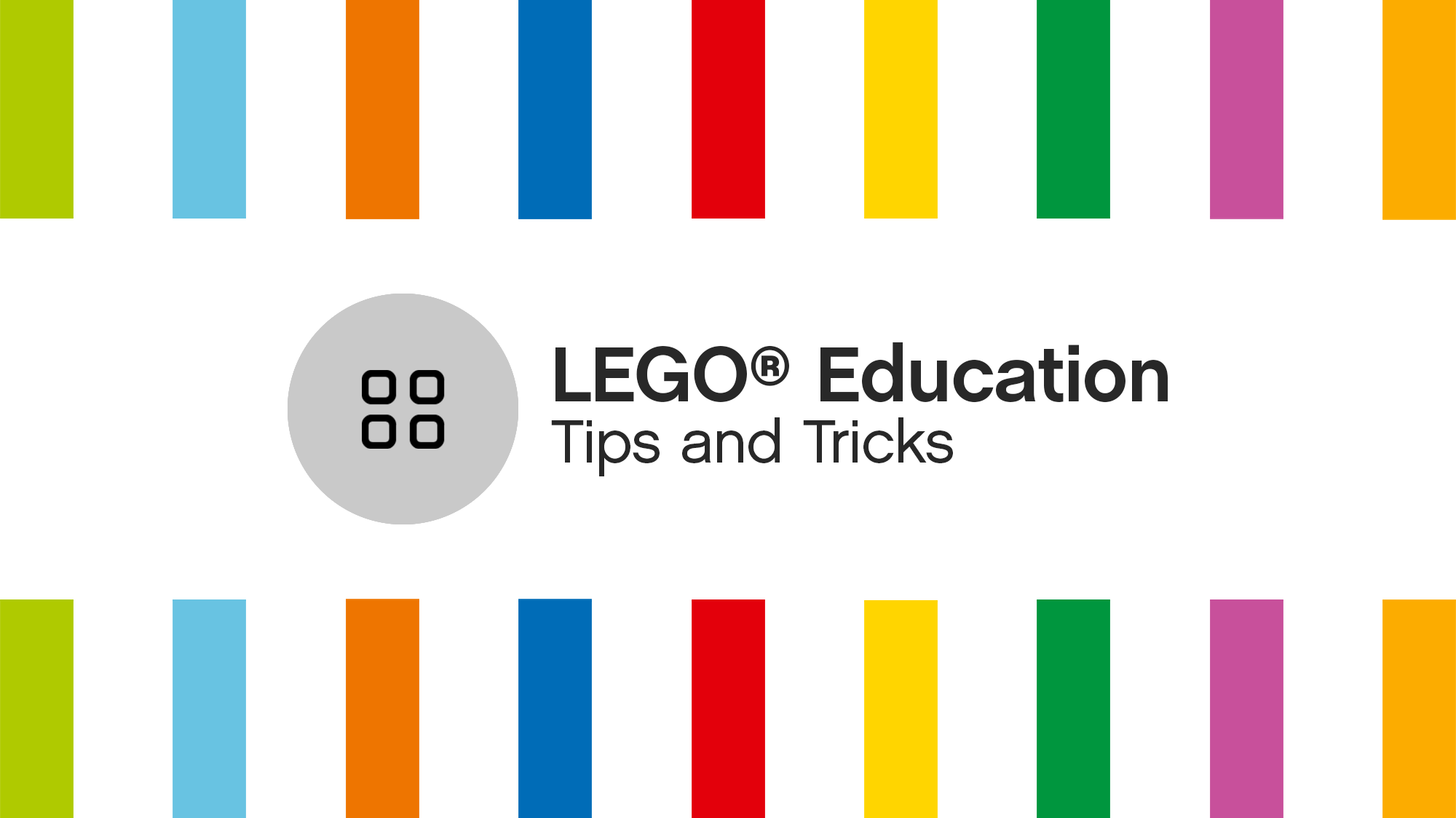Educators around the world have done amazing work to improvise and adapt to the challenge of distance learning and keeping students engaged without the resources of the classroom. For teachers, especially those who rely on a hands-on approach like our LEGO® Master Educators, cleanliness and safety is top of mind. We reached out to this group of brick bosses, makerspace mavericks, and renegades of robotics to ask how they’ll tackle STEAM learning and issues like the sharing of LEGO® Education sets and LEGO® Bricks in this new environment.
As usual the Master Educators did not disappoint. It was clear from their responses that they are committed to finding ways to ensure that students can safely engage in the project-based, playful learning experiences that are so vital to building their confidence as learners. Many of them echoed some key strategies including “scrubbing in and out of class”. Nancy Balaun, STEM Lead at Oakcliff Traditional Theme School in Doraville, GA told us that, “The biggest thing will be hand sanitizing before and after use of any type of LEGO, and then wiping down of all electronic parts with sanitizing wipes between use.” Hand washing and sanitation of bricks might sound basic but it’s going to be integral in preventing the spread of germs in the classroom.
Sterilization of bricks, hubs, and other elements was another hot topic amongst the Master Educators. One idea that we found particularly effective was incorporating a “sanitation zone” in the classroom. Dedicating a space and making the cleaning of bricks, hubs, and elements part of the lesson doesn’t just keep students healthy it also provides a transferable skill and routine they can apply in real life. “It’s an opportunity for students to step up and be part of the solution!”, said one Master Educator.
Many of the teachers we spoke with also talked about the idea of staggering their class projects to limit how many students were using LEGO kits at a given time. While this approach comes with its own set of challenges, at least one Master Educator saw it as an opportunity to bring the learning to another level by splitting the lesson into plugged and unplugged versions of the build.
“If there was a project to build a windmill, one class would use the LEGO® Education WeDo 2.0 set, another would use recyclable materials, and this would set up a great conversation involving computational thinking and design thinking skills!”
We know our Master Educators aren’t the only ones coming up with innovative ideas to keep learning fun, engaging, and experiential. Tell us what you’ll be doing in your classrooms to keep hands-on learning safe by jumping on the discussion board. We've also developed some helpful Hygiene Guidelines that are attached to this post for easy download!
As usual the Master Educators did not disappoint. It was clear from their responses that they are committed to finding ways to ensure that students can safely engage in the project-based, playful learning experiences that are so vital to building their confidence as learners. Many of them echoed some key strategies including “scrubbing in and out of class”. Nancy Balaun, STEM Lead at Oakcliff Traditional Theme School in Doraville, GA told us that, “The biggest thing will be hand sanitizing before and after use of any type of LEGO, and then wiping down of all electronic parts with sanitizing wipes between use.” Hand washing and sanitation of bricks might sound basic but it’s going to be integral in preventing the spread of germs in the classroom.
Sterilization of bricks, hubs, and other elements was another hot topic amongst the Master Educators. One idea that we found particularly effective was incorporating a “sanitation zone” in the classroom. Dedicating a space and making the cleaning of bricks, hubs, and elements part of the lesson doesn’t just keep students healthy it also provides a transferable skill and routine they can apply in real life. “It’s an opportunity for students to step up and be part of the solution!”, said one Master Educator.
Many of the teachers we spoke with also talked about the idea of staggering their class projects to limit how many students were using LEGO kits at a given time. While this approach comes with its own set of challenges, at least one Master Educator saw it as an opportunity to bring the learning to another level by splitting the lesson into plugged and unplugged versions of the build.
“If there was a project to build a windmill, one class would use the LEGO® Education WeDo 2.0 set, another would use recyclable materials, and this would set up a great conversation involving computational thinking and design thinking skills!”
We know our Master Educators aren’t the only ones coming up with innovative ideas to keep learning fun, engaging, and experiential. Tell us what you’ll be doing in your classrooms to keep hands-on learning safe by jumping on the discussion board. We've also developed some helpful Hygiene Guidelines that are attached to this post for easy download!
Blog
LEGO® Education Tips and Tricks
06/18/2020 7:44am EDT

Leave a Comment